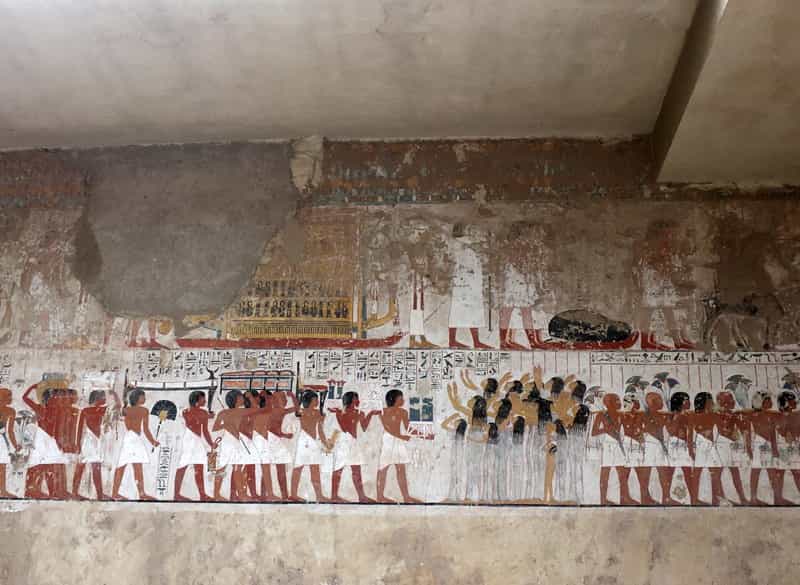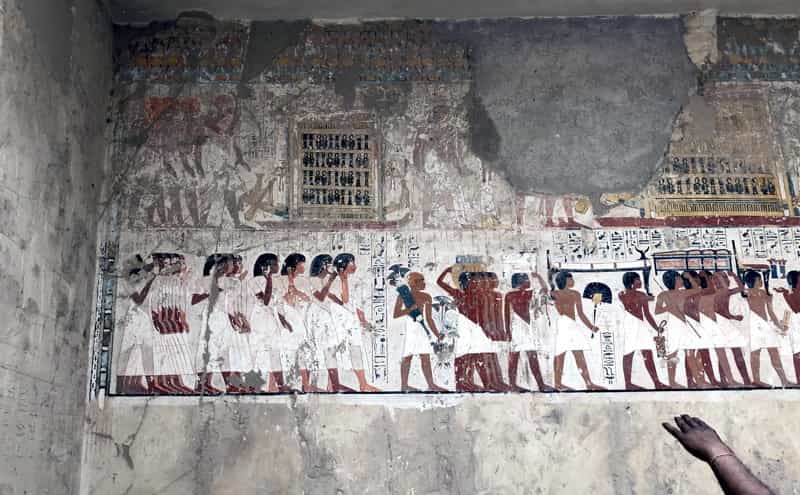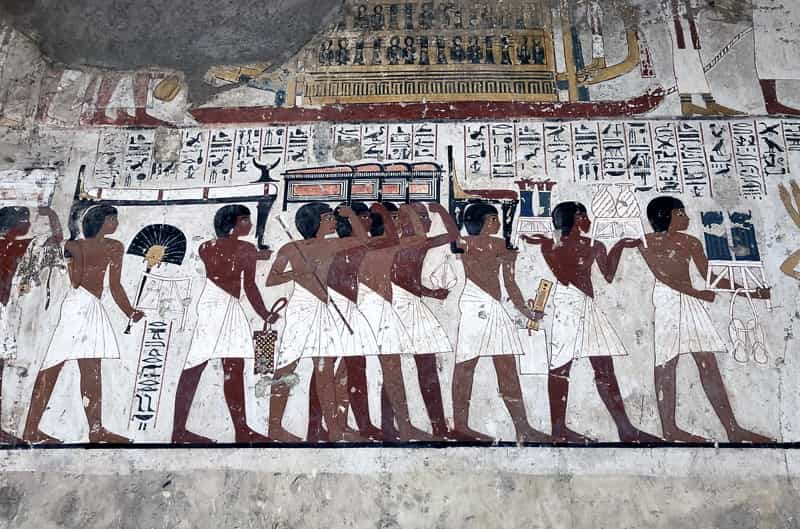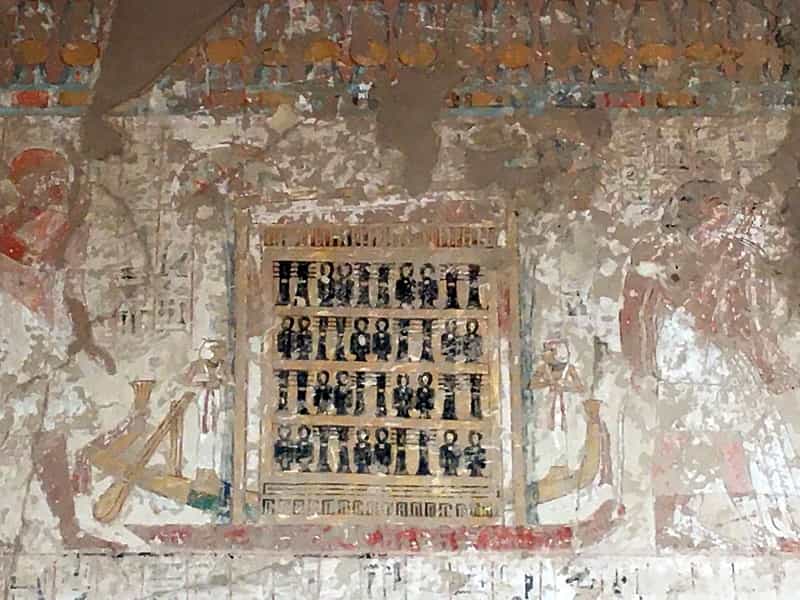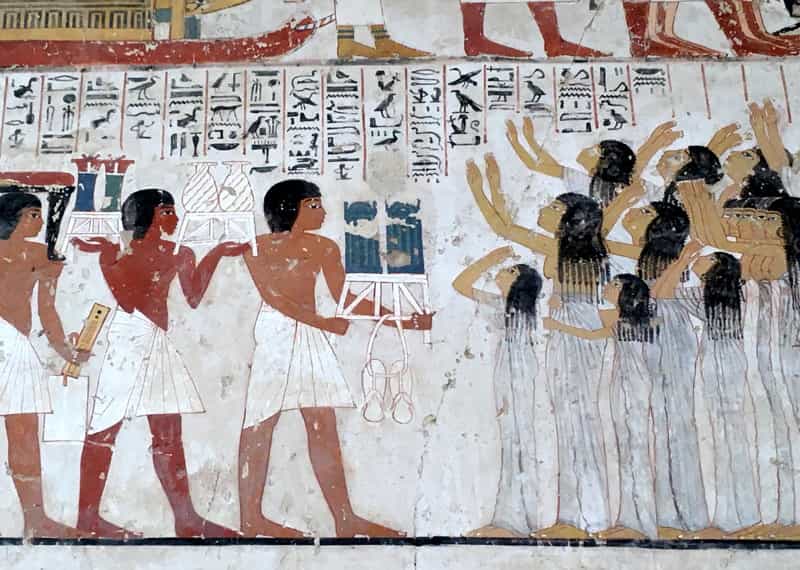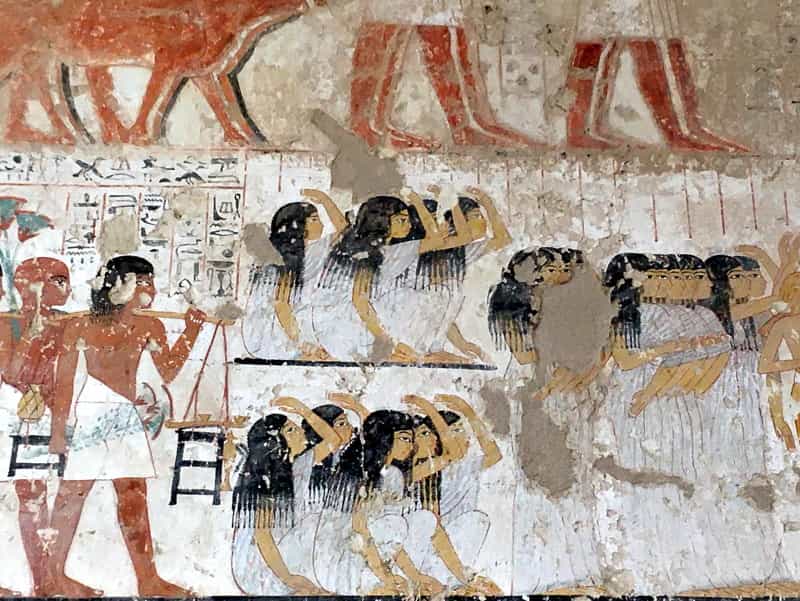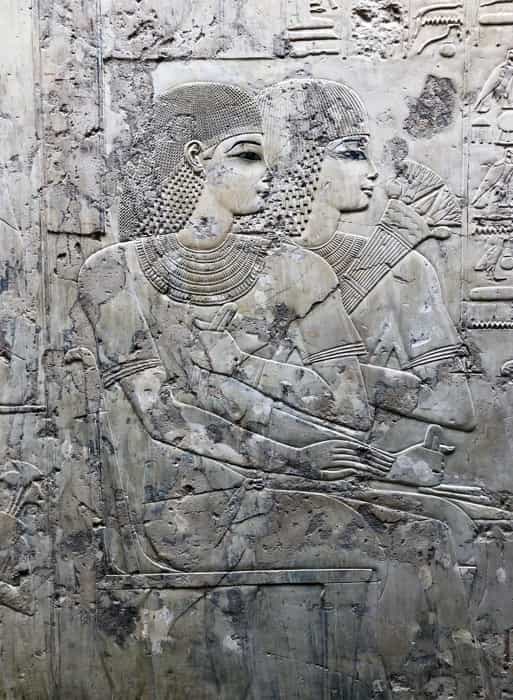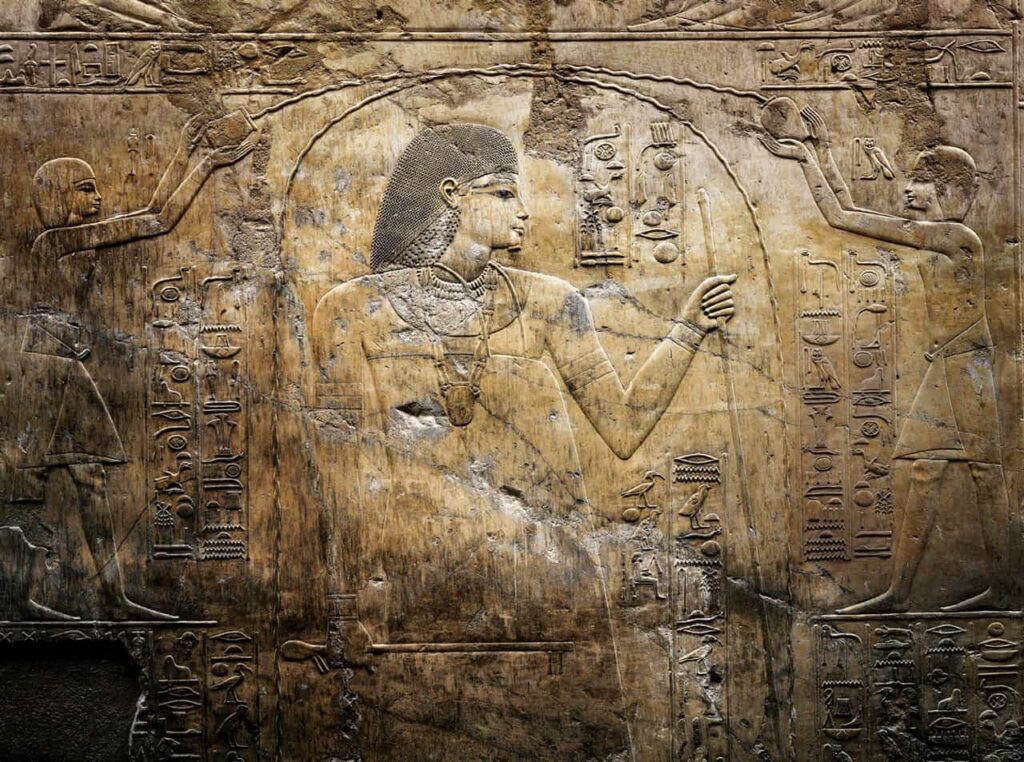Ramose served as the governor of Thebes and vizier during the 18th dynasty, initially under the reign of Amenhotep III and later under that of Amenhotep IV, who subsequently adopted the name Akhenaten.
His tomb is situated in the necropolis of Sheikh Abd el-Qurna, located between the Valley of the Kings and the Valley of the Queens, in an area also referred to as the Valley of the Nobles.
The tomb stands out for its engraved and painted decorations, where the classical style and the Amarna style coexist.
The main section of the tomb comprises a large hypostyle room.
The Funeral Procession
The funeral procession is depicted on the left wall of the room.
In the upper register, a chest with a rounded lid is visible, placed on a boat resting on a sled. Another larger chest is situated further to the right, also placed in a boat. One of these chests is undoubtedly intended for canopic jars.
A careful examination of the chests reveals that their decoration consists of pairs of Djed-pillars juxtaposed with pairs of Isis knots.
This decoration resembles that found on the exterior chapel chest housing the sarcophagus of Tutankhamun, which we were able to admire at the Egyptian Museum in Cairo.
In the lower register, the funeral procession transports the furniture intended for the tomb.
In this furniture, we identify from left to right:
- A lion’s paw funeral bed, with its characteristically shaped headrest, is carried by two servants, one of whom brandishes a fan while the other carries a woven basket.
- Four chests with rounded lids, each held by a servant, possibly containing Ushabtis.
- A padded chair held by a servant with one hand on his shoulders while carrying a scribe’s palette in the other hand.
- Two pairs of jars, each on a support, held by a servant with both arms raised. Two of these vases are made of incised stone, while the other two are possibly made of wood and have a lid, perhaps containing unguents.
- A pair of lidded vases on a stand, possibly two canopic jars, carried by a servant with arms outstretched forward. Under the support hangs a pair of sandals.
On the far right of the scene, we can see the arms of the mourners who are wailing in front of this procession of servants, facing the funerary furniture.
We get a clearer view of them in the following photos, where it also appears that they are preceded by another group of women facing the direction of travel, throwing dust in their hair.
The Funeral Banquet
The bas-relief opposite is of a completely classic style and great finesse. This is part of the scene that represents the funeral banquet.
The couple depicted is Ramose and his wife. Both seated, the spouses are dressed in light linen tunics with short sleeves, wearing curly wigs and heavy necklaces. The wife is holding a lotus flower.
Other couples belonging to the same scene are shown below around the banquet table, including Ramose’s parents and a couple of friends of the deceased.
We also see the food brought by the servants who officiated at the banquet.
An Amarna-Inspired Relief
The Amarna period (1353–1336 BC) derives its name from the new capital founded by Akhenaten, today known as Tell el-Amarna. It marked a time of theological revolution that began during the reign of Amenhotep III and was enforced by his son and successor Amenhotep IV, who later adopted the name Akhenaten.
Politically, the aim was to weaken the powerful clergy of Amun in Thebes by promoting a superior divinity imposed by the king: Aten, one of the manifestations of the solar disk.
This theological shift was accompanied by a stylistic evolution. The art of this period challenged the established artistic norms by emphasizing the relationship between the supreme divinity and the living. The Amarna style, which emerged during Amenhotep III’s reign, flourished especially under Akhenaten’s rule and predominantly in his new capital.
The scenes depicted in the Amarna style illustrate the connection between the world of the living and the solar deity: the sun, always prominent in the representation, inundates the paintings with its rays extending into benevolent hands.
The relief opposite, unfortunately mostly obscured in shadow, portrays the supreme divinity Aten appearing as the sun, bestowing its blessings in the form of rays culminating in hands.
An Unfinished Tomb
However, the tomb remained unfinished: Ramose abandoned it to have another tomb constructed in the new capital established by Akhenaten, modern-day Tell el-Amarna.
Nevertheless, the partially completed drawings or engravings reveal intriguing insights into the drawing technique and the subjects depicted.
